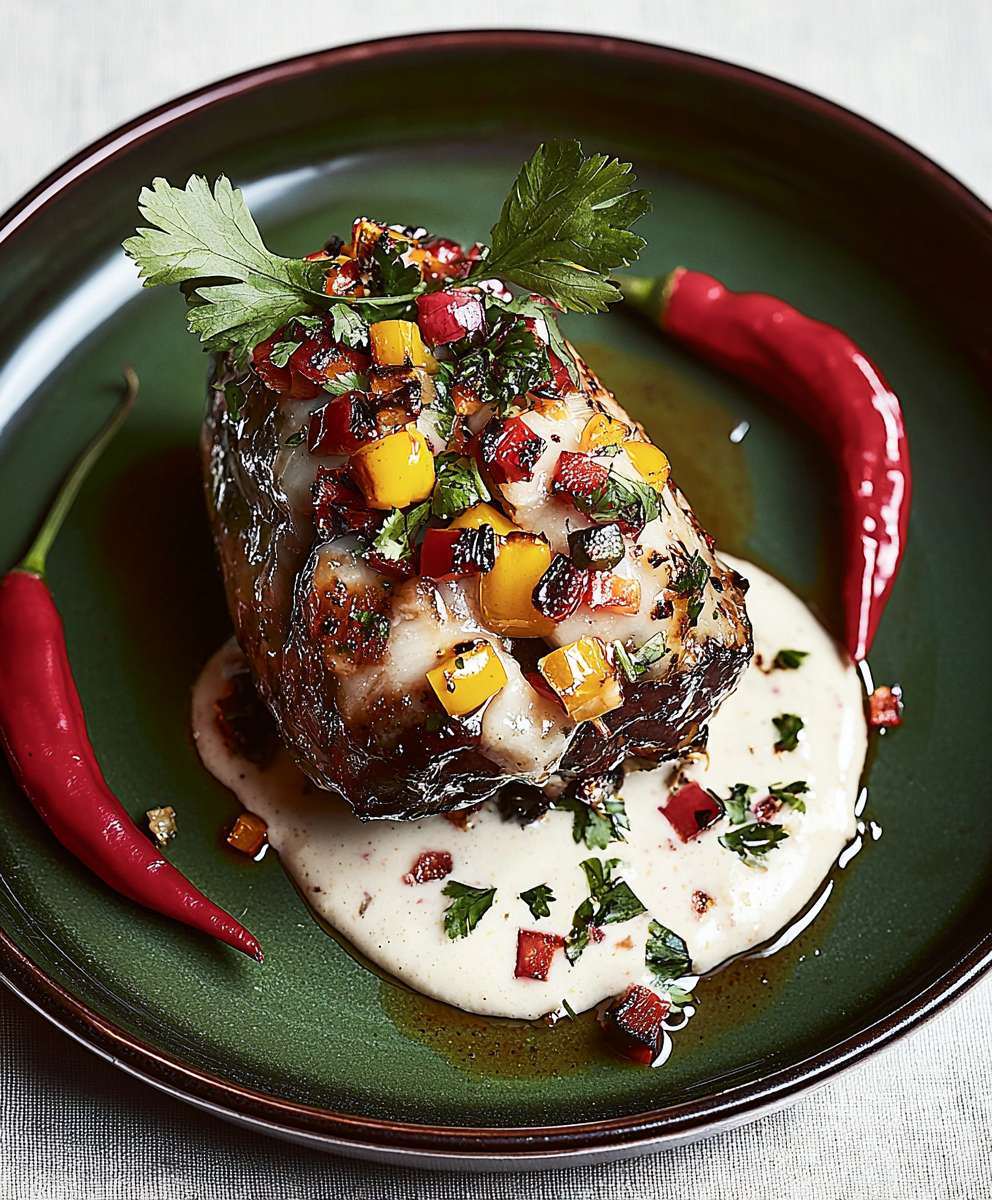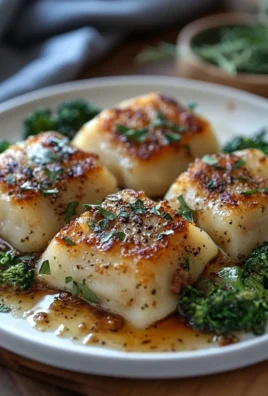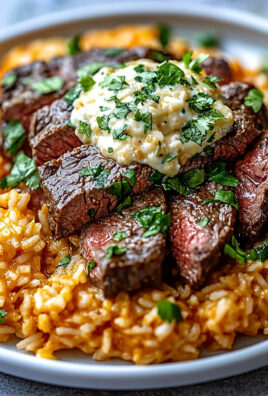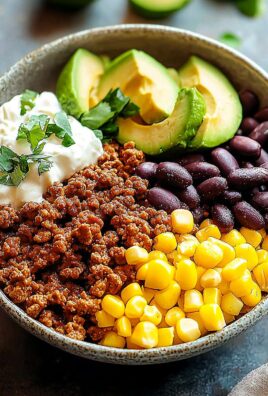Chiles en Nogada: Prepare to embark on a culinary journey to the heart of Mexico with this exquisite and patriotic dish! Imagine biting into a poblano pepper, generously stuffed with a savory mixture of fruits and meats, then draped in a creamy, dreamy walnut sauce and sprinkled with vibrant pomegranate seeds and parsley. It’s not just a meal; it’s an edible work of art, a symphony of flavors and textures that will tantalize your taste buds.
This iconic dish, Chiles en Nogada, boasts a rich history deeply intertwined with Mexican Independence. Legend has it that the dish was created by the nuns of the Santa Monica convent in Puebla to honor Agustín de Iturbide, who signed the Treaty of Córdoba granting Mexico its independence. The colors of the dish green parsley, white walnut sauce, and red pomegranate seeds represent the colors of the Mexican flag, making it a symbol of national pride.
What makes Chiles en Nogada so beloved? Beyond its historical significance, it’s the unique combination of sweet and savory that captivates. The poblano pepper offers a mild heat that complements the sweetness of the fruits and the richness of the meat filling. The creamy walnut sauce, known as “nogada,” adds a luxurious texture and nutty flavor that elevates the dish to another level. While it may seem like a labor of love, the resulting explosion of flavors is well worth the effort. Join me as we recreate this magnificent dish in your own kitchen!
Ingredients:
- For the Poblano Peppers:
- 6 large poblano peppers, preferably straight and uniform in size
- Vegetable oil, for roasting and frying
- For the Picadillo Filling:
- 1 tablespoon vegetable oil
- 1 pound ground pork
- 1/2 pound ground beef
- 1 medium white onion, finely chopped
- 2 cloves garlic, minced
- 1/2 cup diced white potato
- 1/2 cup diced carrot
- 1/2 cup diced apple (Manzano or Golden Delicious are good choices)
- 1/2 cup diced pear (Anjou or Bartlett are good choices)
- 1/4 cup diced dried apricots
- 1/4 cup diced raisins
- 1/4 cup blanched almonds, chopped
- 1/4 cup pine nuts
- 1/4 teaspoon ground cinnamon
- 1/8 teaspoon ground cloves
- 1/8 teaspoon ground cumin
- 1/4 teaspoon black pepper
- 1/2 teaspoon salt, or to taste
- 1/4 cup dry sherry (optional)
- 1 (14.5 ounce) can diced tomatoes, undrained
- For the Nogada (Walnut Sauce):
- 1 cup shelled walnuts, preferably fresh from the current season
- 1 cup whole milk
- 1/2 cup queso fresco, crumbled
- 1/4 cup dry sherry (optional)
- 1/4 teaspoon ground cinnamon
- Pinch of ground nutmeg
- 1/4 teaspoon salt, or to taste
- 2 tablespoons sugar, or to taste (adjust based on walnut sweetness)
- For the Garnish:
- 1 pomegranate, seeded
- Fresh parsley sprigs, finely chopped
Preparing the Poblano Peppers:
- Roast the Peppers: Preheat your broiler. Place the poblano peppers on a baking sheet lined with foil. Broil them, turning occasionally, until the skins are blackened and blistered on all sides. This usually takes about 10-15 minutes. Keep a close eye on them to prevent burning.
- Steam the Peppers: Once the peppers are blackened, immediately transfer them to a bowl and cover tightly with plastic wrap, or place them in a paper bag and close it tightly. This will steam the peppers and make it easier to peel off the skin. Let them steam for about 15-20 minutes.
- Peel the Peppers: After steaming, carefully remove the peppers from the bowl or bag. Using your fingers or a small knife, gently peel off the blackened skin. Be careful not to tear the peppers. If necessary, rinse them lightly under cold water to remove any stubborn bits of skin.
- Make the Slit and Remove Seeds: Make a lengthwise slit down one side of each pepper, being careful not to cut all the way through. Gently open the pepper and remove the seeds and veins inside. Rinse the peppers again if needed to remove any remaining seeds.
- Pat Dry: Pat the peeled and seeded peppers dry with paper towels. This will help them fry better later.
Making the Picadillo Filling:
- Brown the Meats: In a large skillet or Dutch oven, heat the vegetable oil over medium-high heat. Add the ground pork and ground beef and cook, breaking it up with a spoon, until browned. Drain off any excess grease.
- Sauté the Aromatics: Add the chopped onion and minced garlic to the skillet and cook until softened, about 5 minutes.
- Add the Vegetables and Fruits: Add the diced potato, carrot, apple, pear, dried apricots, raisins, almonds, and pine nuts to the skillet. Cook for another 5-7 minutes, stirring occasionally, until the vegetables are slightly softened.
- Season the Filling: Stir in the ground cinnamon, ground cloves, ground cumin, black pepper, and salt. Cook for 1 minute more, allowing the spices to bloom.
- Add the Tomatoes and Sherry (Optional): Pour in the diced tomatoes (undrained) and the dry sherry (if using). Bring the mixture to a simmer, then reduce the heat to low, cover, and cook for about 20-25 minutes, or until the vegetables are tender and the flavors have melded together. Stir occasionally to prevent sticking.
- Adjust Seasoning: Taste the picadillo and adjust the seasoning as needed. Add more salt, pepper, or spices to your liking. If the mixture is too dry, add a little water or broth.
- Cool Slightly: Remove the picadillo from the heat and let it cool slightly before filling the peppers.
Preparing the Nogada (Walnut Sauce):
- Blanch the Walnuts (Optional): For a smoother, whiter sauce, you can blanch the walnuts. Bring a pot of water to a boil. Add the walnuts and boil for 1-2 minutes. Drain the walnuts and rinse them under cold water. The skins should slip off easily. Peel off as much of the skin as possible. This step is optional, but it will result in a more refined sauce.
- Soak the Walnuts: Place the walnuts in a bowl and cover them with the milk. Let them soak for at least 30 minutes, or up to a few hours. This will soften the walnuts and make them easier to blend.
- Blend the Sauce: In a blender or food processor, combine the soaked walnuts (with the milk), queso fresco, dry sherry (if using), ground cinnamon, ground nutmeg, and salt. Blend until smooth and creamy. You may need to add a little more milk if the sauce is too thick.
- Sweeten to Taste: Taste the nogada and add sugar to taste. Start with 2 tablespoons and add more as needed, depending on the sweetness of the walnuts and your personal preference.
- Chill the Sauce: Transfer the nogada to a bowl, cover, and refrigerate for at least 30 minutes to allow the flavors to meld and the sauce to thicken slightly.
Stuffing and Frying the Peppers (Optional):
- Stuff the Peppers: Carefully spoon the picadillo filling into each poblano pepper, filling them generously.
- Close the Peppers: Gently close the slit in each pepper, trying to keep the filling inside. You can use toothpicks to secure them if needed, but remember to remove them before serving.
- Prepare for Frying (Optional): While traditionally, the peppers are sometimes dipped in an egg batter and fried, this step is optional. If you prefer a lighter dish, you can skip the frying. If you choose to fry, whisk 2-3 eggs in a bowl until light and frothy. Lightly dust the stuffed peppers with flour, then dip them in the egg batter, ensuring they are fully coated.
- Fry the Peppers (Optional): Heat about 1/2 inch of vegetable oil in a large skillet over medium heat. Carefully place the battered peppers in the hot oil, being careful not to overcrowd the pan. Fry for 2-3 minutes per side, or until golden brown and crispy.
- Drain the Peppers (Optional): Remove the fried peppers from the skillet and place them on a plate lined with paper towels to drain off any excess oil.
Assembling and Serving:
- Plate the Peppers: Place one or two stuffed poblano peppers on each plate.
- Spoon on the Nogada: Generously spoon the chilled nogada over each pepper, covering it completely.
- Garnish: Sprinkle the pomegranate seeds over the nogada. The red seeds represent the blood of the Mexican flag.
- Add Parsley: Sprinkle the chopped fresh parsley over the pomegranate seeds. The green parsley represents the hope of the Mexican flag.
- Serve Immediately: Serve the Chiles en Nogada immediately. They are best enjoyed at room temperature or slightly chilled.
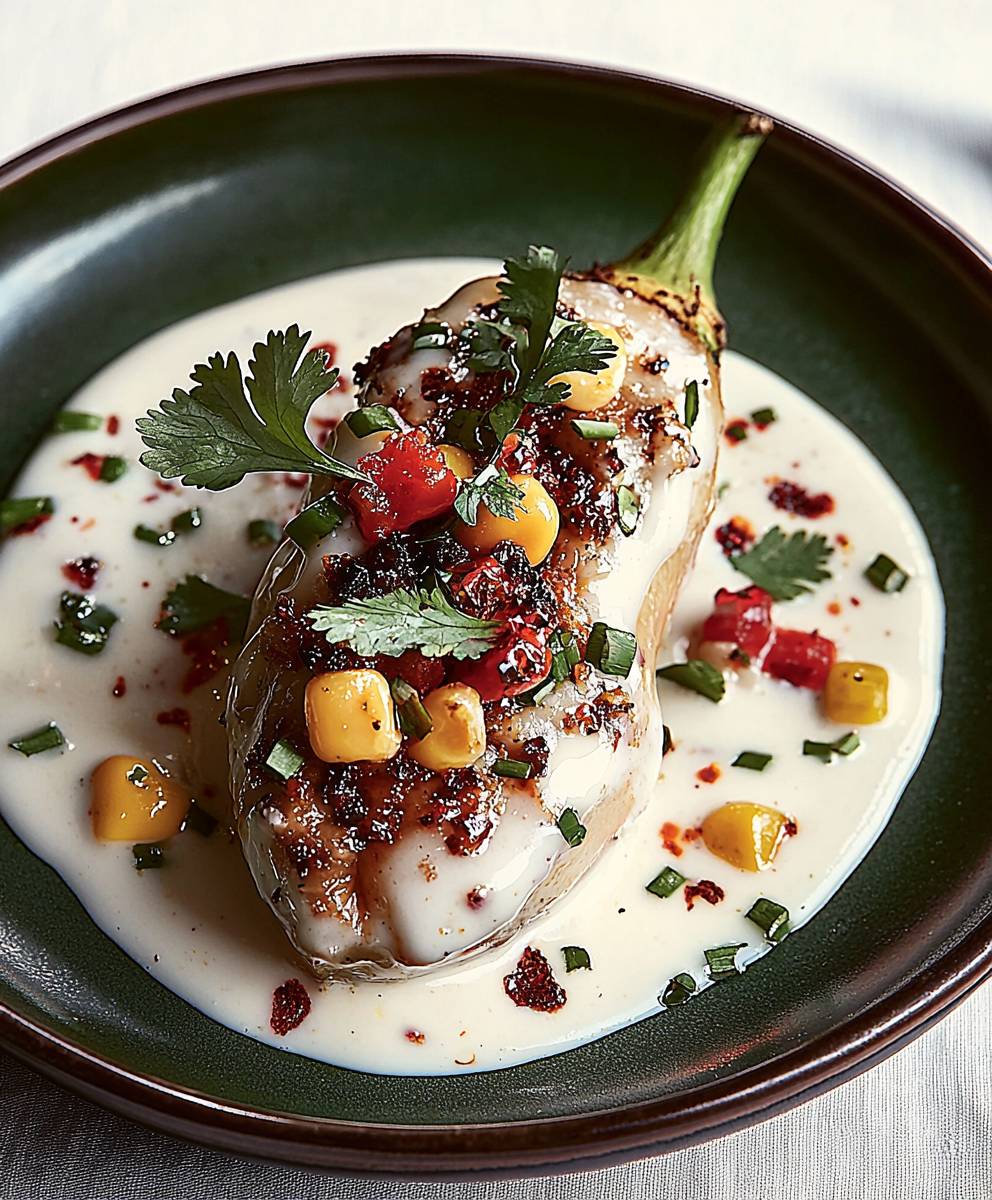
Conclusion:
This isn’t just a recipe; it’s an invitation to experience a piece of Mexican history and culinary artistry. The vibrant colors, the complex flavors, and the sheer dedication required to create Chiles en Nogada make it a truly unforgettable dish. From the subtly sweet and savory filling to the creamy, nutty nogada sauce and the bright pomegranate seeds, every element works in perfect harmony. It’s a dish that tells a story, a dish that celebrates tradition, and a dish that will undoubtedly impress anyone lucky enough to taste it.
But beyond its historical significance and impressive presentation, this recipe is a must-try because it’s simply delicious. The combination of textures and flavors is unlike anything else you’ve likely encountered. The slight heat from the poblano pepper is beautifully balanced by the sweetness of the fruit filling and the richness of the walnut sauce. It’s a symphony of tastes that will tantalize your taste buds and leave you wanting more.
And while the traditional recipe is a masterpiece in itself, don’t be afraid to experiment and make it your own! For a vegetarian option, you can easily substitute the meat filling with a mixture of lentils, mushrooms, and vegetables. If you’re short on time, you can use pre-made walnut sauce, although I highly recommend making it from scratch for the best flavor.
Serving Suggestions and Variations:
* Presentation is key! Arrange the chiles beautifully on a platter, ensuring each one is generously coated in the nogada sauce and sprinkled with pomegranate seeds and parsley.
* Serve with a side of warm tortillas or crusty bread to soak up the delicious sauce.
* For a spicier kick, add a pinch of cayenne pepper to the filling or the nogada sauce.
* If you’re not a fan of walnuts, you can substitute them with pecans or almonds in the sauce.
* Consider adding a splash of sherry or brandy to the nogada sauce for an extra layer of flavor.
* Leftover chiles en nogada can be stored in the refrigerator for up to three days. Reheat gently in the oven or microwave before serving.
I know this recipe might seem a bit daunting at first, but trust me, the effort is well worth it. Take your time, follow the instructions carefully, and don’t be afraid to ask for help if you need it. The end result will be a dish that you’ll be proud to share with your friends and family.
I truly believe that everyone should experience the magic of Chiles en Nogada at least once in their lives. It’s a dish that transcends mere sustenance; it’s a cultural experience, a celebration of flavor, and a testament to the power of food to bring people together.
So, what are you waiting for? Gather your ingredients, put on your apron, and get ready to embark on a culinary adventure. I can’t wait to hear about your experience! Please, share your photos, your tips, and your variations in the comments below. Let’s create a community of Chiles en Nogada enthusiasts and spread the love for this incredible dish! I’m confident that once you try this recipe, it will become a new favorite in your repertoire. Buen provecho!
Chiles en Nogada: The Authentic Recipe and History
Festive Mexican dish: poblano peppers stuffed with sweet and savory picadillo, smothered in creamy walnut sauce (nogada), garnished with pomegranate seeds and parsley.
Ingredients
- 6 large poblano peppers, preferably straight and uniform in size
- Vegetable oil, for roasting and frying
- 1 tablespoon vegetable oil
- 1 pound ground pork
- 1/2 pound ground beef
- 1 medium white onion, finely chopped
- 2 cloves garlic, minced
- 1/2 cup diced white potato
- 1/2 cup diced carrot
- 1/2 cup diced apple (Manzano or Golden Delicious are good choices)
- 1/2 cup diced pear (Anjou or Bartlett are good choices)
- 1/4 cup diced dried apricots
- 1/4 cup diced raisins
- 1/4 cup blanched almonds, chopped
- 1/4 cup pine nuts
- 1/4 teaspoon ground cinnamon
- 1/8 teaspoon ground cloves
- 1/8 teaspoon ground cumin
- 1/4 teaspoon black pepper
- 1/2 teaspoon salt, or to taste
- 1/4 cup dry sherry (optional)
- 1 (14.5 ounce) can diced tomatoes, undrained
- 1 cup shelled walnuts, preferably fresh from the current season
- 1 cup whole milk
- 1/2 cup queso fresco, crumbled
- 1/4 cup dry sherry (optional)
- 1/4 teaspoon ground cinnamon
- Pinch of ground nutmeg
- 1/4 teaspoon salt, or to taste
- 2 tablespoons sugar, or to taste (adjust based on walnut sweetness)
- 1 pomegranate, seeded
- Fresh parsley sprigs, finely chopped
Instructions
- Roast the Peppers: Preheat your broiler. Place the poblano peppers on a baking sheet lined with foil. Broil them, turning occasionally, until the skins are blackened and blistered on all sides. This usually takes about 10-15 minutes. Keep a close eye on them to prevent burning.
- Steam the Peppers: Once the peppers are blackened, immediately transfer them to a bowl and cover tightly with plastic wrap, or place them in a paper bag and close it tightly. This will steam the peppers and make it easier to peel off the skin. Let them steam for about 15-20 minutes.
- Peel the Peppers: After steaming, carefully remove the peppers from the bowl or bag. Using your fingers or a small knife, gently peel off the blackened skin. Be careful not to tear the peppers. If necessary, rinse them lightly under cold water to remove any stubborn bits of skin.
- Make the Slit and Remove Seeds: Make a lengthwise slit down one side of each pepper, being careful not to cut all the way through. Gently open the pepper and remove the seeds and veins inside. Rinse the peppers again if needed to remove any remaining seeds.
- Pat Dry: Pat the peeled and seeded peppers dry with paper towels. This will help them fry better later.
- Brown the Meats: In a large skillet or Dutch oven, heat the vegetable oil over medium-high heat. Add the ground pork and ground beef and cook, breaking it up with a spoon, until browned. Drain off any excess grease.
- Sauté the Aromatics: Add the chopped onion and minced garlic to the skillet and cook until softened, about 5 minutes.
- Add the Vegetables and Fruits: Add the diced potato, carrot, apple, pear, dried apricots, raisins, almonds, and pine nuts to the skillet. Cook for another 5-7 minutes, stirring occasionally, until the vegetables are slightly softened.
- Season the Filling: Stir in the ground cinnamon, ground cloves, ground cumin, black pepper, and salt. Cook for 1 minute more, allowing the spices to bloom.
- Add the Tomatoes and Sherry (Optional): Pour in the diced tomatoes (undrained) and the dry sherry (if using). Bring the mixture to a simmer, then reduce the heat to low, cover, and cook for about 20-25 minutes, or until the vegetables are tender and the flavors have melded together. Stir occasionally to prevent sticking.
- Adjust Seasoning: Taste the picadillo and adjust the seasoning as needed. Add more salt, pepper, or spices to your liking. If the mixture is too dry, add a little water or broth.
- Cool Slightly: Remove the picadillo from the heat and let it cool slightly before filling the peppers.
- Blanch the Walnuts (Optional): For a smoother, whiter sauce, you can blanch the walnuts. Bring a pot of water to a boil. Add the walnuts and boil for 1-2 minutes. Drain the walnuts and rinse them under cold water. The skins should slip off easily. Peel off as much of the skin as possible. This step is optional, but it will result in a more refined sauce.
- Soak the Walnuts: Place the walnuts in a bowl and cover them with the milk. Let them soak for at least 30 minutes, or up to a few hours. This will soften the walnuts and make them easier to blend.
- Blend the Sauce: In a blender or food processor, combine the soaked walnuts (with the milk), queso fresco, dry sherry (if using), ground cinnamon, ground nutmeg, and salt. Blend until smooth and creamy. You may need to add a little more milk if the sauce is too thick.
- Sweeten to Taste: Taste the nogada and add sugar to taste. Start with 2 tablespoons and add more as needed, depending on the sweetness of the walnuts and your personal preference.
- Chill the Sauce: Transfer the nogada to a bowl, cover, and refrigerate for at least 30 minutes to allow the flavors to meld and the sauce to thicken slightly.
- Stuff the Peppers: Carefully spoon the picadillo filling into each poblano pepper, filling them generously.
- Close the Peppers: Gently close the slit in each pepper, trying to keep the filling inside. You can use toothpicks to secure them if needed, but remember to remove them before serving.
- Prepare for Frying (Optional): While traditionally, the peppers are sometimes dipped in an egg batter and fried, this step is optional. If you prefer a lighter dish, you can skip the frying. If you choose to fry, whisk 2-3 eggs in a bowl until light and frothy. Lightly dust the stuffed peppers with flour, then dip them in the egg batter, ensuring they are fully coated.
- Fry the Peppers (Optional): Heat about 1/2 inch of vegetable oil in a large skillet over medium heat. Carefully place the battered peppers in the hot oil, being careful not to overcrowd the pan. Fry for 2-3 minutes per side, or until golden brown and crispy.
- Drain the Peppers (Optional): Remove the fried peppers from the skillet and place them on a plate lined with paper towels to drain off any excess oil.
- Plate the Peppers: Place one or two stuffed poblano peppers on each plate.
- Spoon on the Nogada: Generously spoon the chilled nogada over each pepper, covering it completely.
- Garnish: Sprinkle the pomegranate seeds over the nogada. The red seeds represent the blood of the Mexican flag.
- Add Parsley: Sprinkle the chopped fresh parsley over the pomegranate seeds. The green parsley represents the hope of the Mexican flag.
- Serve Immediately: Serve the Chiles en Nogada immediately. They are best enjoyed at room temperature or slightly chilled.
Notes
- The sweetness of the nogada will depend on the walnuts used. Adjust the sugar accordingly.
- Blanching the walnuts for the nogada is optional but results in a smoother, whiter sauce.
- Frying the stuffed peppers is also optional. Skipping this step makes for a lighter dish.
- Chiles en Nogada are traditionally served at room temperature or slightly chilled.
- The colors of the dish (green parsley, white sauce, and red pomegranate seeds) represent the colors of the Mexican flag.

